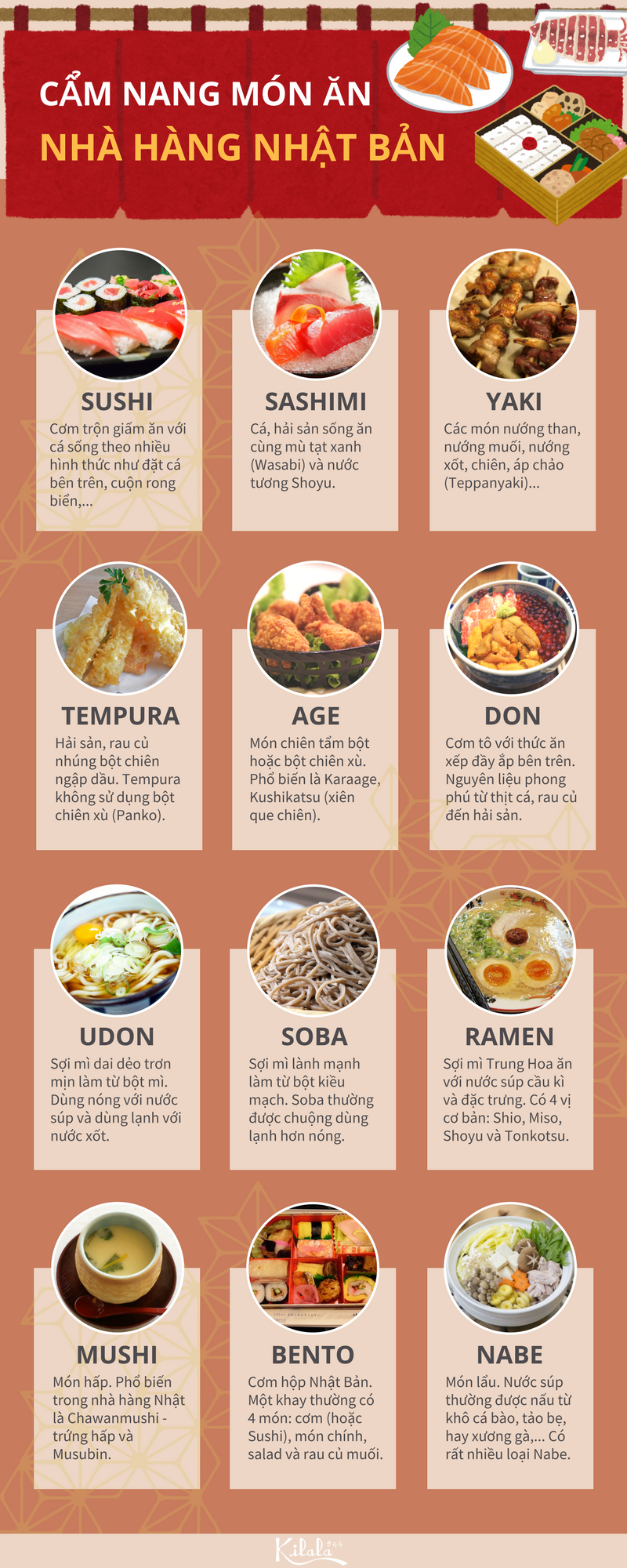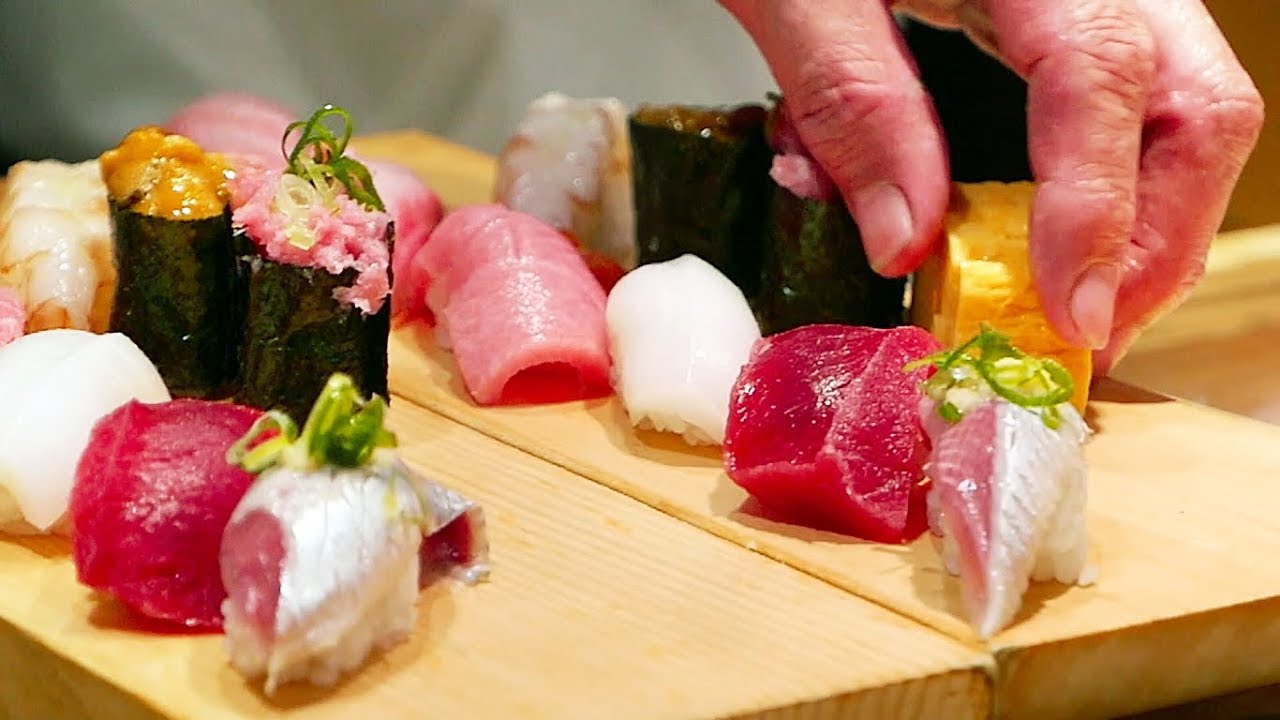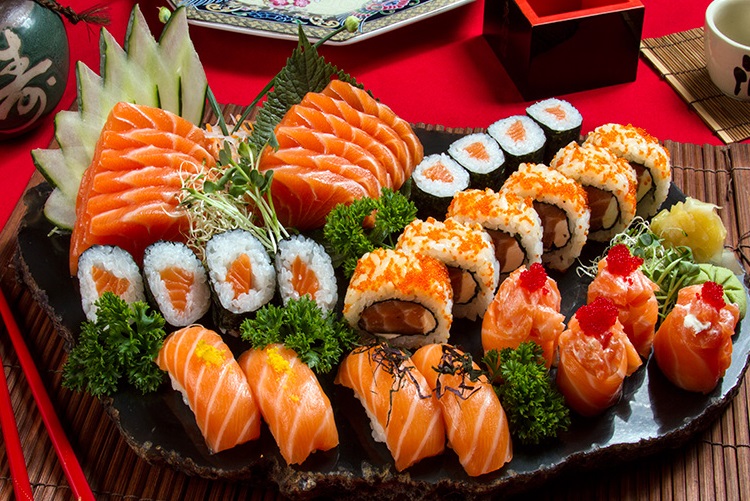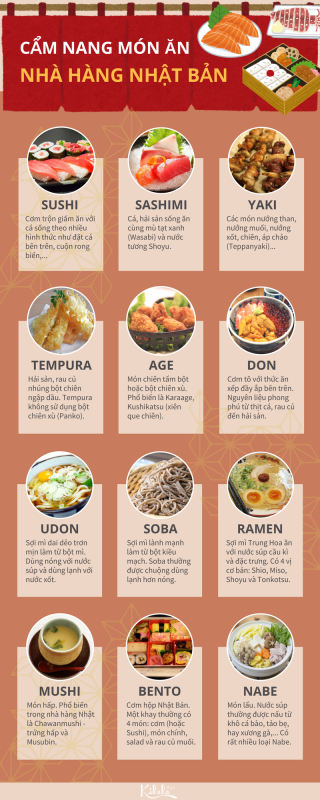No products in the cart.
Blog
Khám Phá ẩm Thực Nhật Bản: Từ Sashimi đến Các Món ăn đường Phố
[

Khám Phá Ẩm Thực Nhật Bản: Từ Sashimi đến Các Món Ăn Đường Phố

Introduction:

Japan, a land of ancient traditions and breathtaking landscapes, also boasts a culinary scene that’s both incredibly diverse and exquisitely refined. From the delicate artistry of sushi to the hearty warmth of ramen, Japanese food offers a journey for the senses, a symphony of flavors and textures. This exploration delves into the heart of Japanese gastronomy, unveiling its multifaceted nature, from the elegant formality of high-end restaurants to the vibrant energy of street food stalls. Prepare to embark on a culinary adventure that will tantalize your taste buds and leave you craving more! We’ll navigate the captivating world of Japanese cuisine, moving from the pristine elegance of sashimi to the boisterous delights of street food, revealing the secrets and stories behind some of the country’s most iconic dishes.
Sashimi: The Art of Raw Perfection
Sashimi, the pinnacle of Japanese raw fish artistry, showcases the freshness and quality of ingredients above all else. Each slice is a testament to the chef’s skill, the careful selection of the fish, and the dedication to preserving its natural flavor. The experience transcends mere eating; it’s a meditation on taste and texture.
- Fish Selection: The type of fish is crucial. Popular choices include tuna (maguro), salmon (sake), yellowtail (hamachi), and mackerel (saba), each offering a unique flavor profile.
- Knife Skills: The precision of the cuts is paramount, ensuring the fish is sliced with the proper thickness and angle to optimize texture and taste.
- Presentation: The visual appeal of sashimi is as important as the taste. The arrangement of the fish on the plate is a form of artistic expression.
- Accompaniments: Wasabi, soy sauce, and pickled ginger (gari) are traditional accompaniments, enhancing the flavor of the fish without overpowering it.
- Temperature: Maintaining the correct temperature is vital to preserve the fish’s freshness and quality.
- Seasonality: The best sashimi utilizes seasonal fish, ensuring peak flavor and freshness.
Sushi: A Culinary Masterpiece
Sushi, often mistakenly conflated with sashimi, is a broader category encompassing a wide range of dishes featuring vinegared rice. While sashimi focuses on raw fish alone, sushi incorporates a variety of ingredients, including seafood, vegetables, and eggs, all artfully combined with rice and often seaweed (nori).
- Rice Preparation: The vinegared rice is the foundation of sushi, and its preparation is a critical aspect of the process. The balance of vinegar, sugar, and salt is key.
- Ingredient Variety: The versatility of sushi allows for endless combinations, from classic nigiri (fish on rice) to elaborate rolls (maki) filled with various ingredients.
- Rolling Techniques: Creating perfect sushi rolls requires considerable skill and practice, achieving the right tightness and evenness.
- Presentation: Like sashimi, the visual presentation of sushi is an important consideration, showcasing the chef’s artistry.
- Types of Sushi: Understanding the different types of sushi (e.g., nigiri, maki, uramaki, temaki) is essential to appreciating the diversity of this culinary form.
- Freshness: As with sashimi, freshness is paramount in sushi, impacting both flavor and safety.
Ramen: A Comforting Bowl of Warmth
Ramen, a soul-satisfying noodle soup, is a staple of Japanese cuisine, offering a diverse range of flavors and regional variations. While the basic components remain consistent – broth, noodles, and toppings – the variations in each element create a culinary landscape of endless possibilities.
- Broth: The broth is the heart of ramen, often simmered for hours to develop its rich flavor. Common types include tonkotsu (pork bone), shoyu (soy sauce), miso (fermented soybean paste), and shio (salt).
- Noodles: The noodles provide the textural foundation, typically made from wheat flour. The thickness and texture of the noodles vary by region and preference.
- Toppings: The toppings add depth and complexity to the ramen, with options including chashu (braised pork belly), marinated eggs (ajitama), scallions, bamboo shoots (menma), and nori seaweed.
- Regional Variations: Exploring the regional variations of ramen across Japan reveals a fascinating diversity in flavors and styles.
- Customization: Many ramen shops allow for customization, allowing diners to adjust the richness of the broth or add extra toppings.
- Seasonality: Some ramen shops incorporate seasonal ingredients into their broths and toppings, reflecting the changing seasons.
Tempura: The Art of Light and Crisp
Tempura, a culinary technique involving deep-frying battered seafood and vegetables, showcases the Japanese mastery of creating light, crispy textures without excessive oil absorption. This delicate balance requires precision and skill.
- Batter: The batter, a crucial element, is typically made from flour, water, and egg, requiring a delicate touch to ensure a light and crispy result.
- Oil Temperature: Maintaining the correct oil temperature is essential for achieving the desired texture. Too low, and the tempura will be greasy; too high, and it will burn.
- Ingredients: A wide variety of ingredients can be used in tempura, including shrimp, squid, vegetables (like sweet potato, eggplant, and green beans), and even mushrooms.
- Draining: Proper draining is crucial to remove excess oil after frying, ensuring a light and crispy result.
- Serving: Tempura is traditionally served immediately after frying to enjoy its optimal texture and crispiness.
- Dipping Sauce: Tempura is typically served with tsuyu, a light and savory dipping sauce, enhancing the delicate flavor of the ingredients.
Japanese Street Food: A Vibrant Culinary Landscape
Japanese street food offers a vibrant and diverse range of culinary experiences, reflecting the country’s rich culinary heritage and its modern dynamism. These readily available bites provide a glimpse into daily Japanese life and are an essential part of the culinary journey.
- Takoyaki: These octopus balls, grilled in special molds, are a beloved street food, featuring savory octopus bits, tempura scraps, and a flavorful sauce.
- Okonomiyaki: This savory pancake, made with flour, eggs, and shredded cabbage, offers an endless variety of toppings and regional variations.
- Yakitori: These grilled skewers, typically made from chicken but also featuring other meats and vegetables, are a popular street food, especially enjoyed with beer.
- Ramen (Street Food Version): While ramen is a full meal, simpler, smaller versions are commonly found as street food, offering quick and satisfying bites.
- Onigiri: These rice balls, often filled with various ingredients like salted salmon, tuna mayo, or pickled plums, are a convenient and portable snack.
- Dorayaki: These sweet pancakes filled with a sweet red bean paste (anko) are a beloved dessert item, often found at street food stalls.
Table Summarizing Key Aspects
| Category | Key Element 1 | Key Element 2 | Key Element 3 | Key Element 4 |
|---|---|---|---|---|
| Sashimi | Fish Selection | Knife Skills | Presentation | Accompaniments |
| Sushi | Rice Preparation | Ingredient Variety | Rolling Techniques | Presentation |
| Ramen | Broth | Noodles | Toppings | Regional Variations |
| Tempura | Batter | Oil Temperature | Ingredients | Draining |
| Street Food | Variety of Options | Accessibility | Regional Differences | Quick and Convenient Bites |
Conclusion:
From the exquisite artistry of sashimi and sushi to the comforting warmth of ramen and the vibrant energy of street food, Japanese cuisine offers an unparalleled culinary journey. This exploration has only scratched the surface of this rich and diverse culinary tradition. Each dish represents not just a meal, but a story, a reflection of Japanese culture, history, and artistry. Whether you’re a seasoned gourmand or a curious newcomer, the world of Japanese food is an invitation to explore, savor, and appreciate the masterful blend of tradition and innovation that defines this truly unique gastronomic landscape. Embark on your own culinary adventure, and discover the treasures awaiting you in the heart of Japan’s gastronomic soul.
Keywords: Japanese Cuisine, Sashimi, Sushi, Ramen, Tempura, Japanese Street Food
]


Bài viết hay quá! Ảnh đẹp lung linh, đọc xong thèm thuồng các món ăn Nhật luôn. Mình nhất định phải thử làm theo vài món!
Chán chết, toàn ảnh thôi, nội dung ít quá. Mình mong đợi nhiều thông tin hơn về cách chế biến chứ không phải chỉ là hình ảnh đẹp.
Mình thấy thiếu thông tin về giá cả của các món ăn. Đọc xong vẫn không biết giá cả như thế nào cả.
Tôi không đồng ý với quan điểm của tác giả về sushi. Theo tôi, sushi ngon nhất vẫn là ở Nhật Bản chứ không phải ở Việt Nam.
Ôi, tuyệt vời! Đọc xong bài viết mà thấy như mình đang ở Nhật vậy. Tuyệt cú mèo!
Bài viết này…thật là…thú vị. (Sarcasm). Tóm lại, chẳng có gì đặc sắc cả.
Hài hước ghê! Mấy cái ảnh nhìn mà cười bể bụng. Tuyệt vời ông mặt trời!
Bài viết hay đó nhưng mà hình như thiếu mất thông tin về văn hoá ẩm thực Nhật Bản nhỉ? Chỉ nói về món ăn thôi thì hơi thiếu.
Thật sự là mình thất vọng. Mong tác giả sẽ làm bài viết chất lượng hơn trong những lần sau.
Tuyệt vời! Bài viết rất chi tiết và đầy đủ thông tin. Đọc xong mình đã có thêm nhiều kiến thức về ẩm thực Nhật Bản rồi!
Bài viết này hay lắm, nhưng mà sao nhiều lỗi chính tả thế? Cần chỉnh sửa lại cho cẩn thận hơn nhé!
Thôi chết, đọc xong bài này mà thèm quá! Phải đi ăn Nhật ngay và luôn mới được!
Hình như tác giả chưa từng ăn ở Nhật Bản bao giờ thì phải. Mấy món này không chuẩn xác lắm đâu!
Bài viết hay, hình ảnh đẹp. Nhưng mà… sao lại để thiếu thông tin quan trọng như địa chỉ các quán ăn ngon thế này? Đáng tiếc quá!